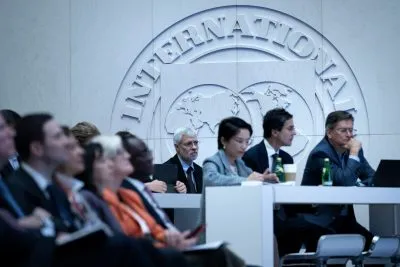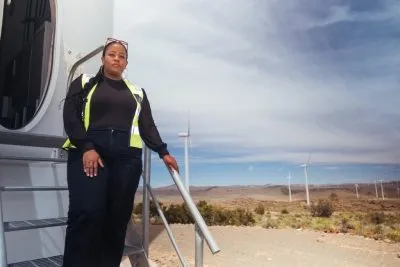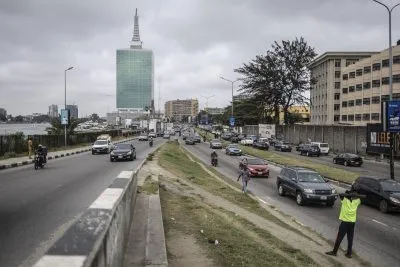The last 10 years has seen a marked change in the number of infrastructure projects in Africa reaching financial close.
This has clearly been driven by the capital raising drive carried out by key development, export credit and commercial banks now active across the continent. These institutions, like the Africa Finance Corporation (AFC) have been successful in using private and public (capital market) funding programmes to meet some of the infrastructure project opportunities across Africa.
Infrastructure investments have benefited from globally low interest rates which have contributed to lower costs of funding and higher project and equity returns. However, several other factors have also contributed to the positive outlook shared by private infrastructure investors in Africa.
For instance, after years of underinvestment, caused largely by poor planning, many African governments have now improved their infrastructure policy frame-works. It has became clear to these governments that they are competing for similar sources of debt and equity capital.
Governments now see infrastructure development as a job creation opportunity and have evolved their infrastructure programmes to include more effective tender procurement processes and, more recently, public-private partnership (PPP) projects. For PPP projects, most governments have passed policies into law allowing for country specific legal frameworks that meet international best practice for PPP financing.
This has taken a lot more time than most anticipated, but we can see a core group of African countries that have succeeded in this aspect. Increased returns from infrastructure development have also been driven by countries utilising opportunities around natural resources, their regional presence, their human capital and location of infrastructure sites.
The Africa growth story is largely based on continued trade flows within the continent and with trading partners like Europe, India and China. However all projections of growth depend on the requisite infrastructure development being met.
The infrastructure gap is currently estimated to be between $75bn and $90bn per year. But this figure on its own is quite meaningless as it takes all African countries as a whole, irrespective of their development levels or indeed their ability to erect infrastructure in the first place even if the finance is available. In fact, infrastructure commitments for 2015–16 are over $80bn but this includes a hefty investment from China, principally in railways as well as some large oil, gas and mining projects.
Intra-African trade spin-off
Though lagging behind other global markets, intra-regional trade in Africa in the last decade has become a key factor in Africa’s infrastructure requirement. It is clear that more funding into infrastructure development, especially in power, transport and logistics, will have a vast impact on intra-African flows relative to other global markets.
This funding has improved the commercial value of exploitation rights retained by governments and provides governments with an opportunity to set up dedicated agencies that oversee free trade zones and sovereign wealth assets, with these agencies now responsible for securing the government’s equity stake in infrastructure projects.
So with a positive impact on their dollar reserves, governments are able to provide stronger sovereign guarantees across more infrastructure projects. In effect, this reduces the cost of long-term debt funding on the project, leading to a higher profit margin for investors.
In my 11 years of working with institutional investors in various Francophone and Anglophone African countries, we have identified and helped originate infrastructure assets such as freight rail, dry ports, gas and renewable power, water and waste treatment that now form part of the backbone of infrastructure development growth in Africa. Over this period, various government agencies have been able to reduce expected operational disruptions by promoting more balanced concessions to investors.
The increase in blue chip off-take and counterparty corporate activity is also a factor in actual and forecasted improved returns for Africa’s infrastructure assets. The balance sheet quality of off-takers and procurement companies ultimately allows the developers to easily secure credit insurance cover and most of all, reduce their cost of purchasing political and credit insurance.
The opportunity for multiple developers to participate in the equity of the infrastructure asset means a lower loan requirement and a higher debt coverage ratio. As the landscape has become more competitive for engineering procurement and construction (EPC), operation and maintenance and equipment manufacturing companies, and with government agencies in search of cheaper development capital, the quality of shortlisted projects and developers has improved.
Reducing the risk, increasing the profit
A clear signal that infrastructure assets are now more bankable is that developers are prepared to take on pre-feasibility risk. EPC companies have now extended their model to include a development option providing equity capital to secure, prolong and dictate their profit margins.
In most cases they have become responsible for defining the off-take opportunity and defining the risk, return and funding structures. This means that along with developers, the EPC companies are now prepared to take on pre-feasibility risk with a clear strategy on the profitability of the underlying assets’ future revenue stream.
Another factor has been the availability of investment products that allow for counterparty, market and credit risk transfer. On this point the concern is centred around foreign exchange risk and the lack of adequate hedging instruments for Africa-related projects.
There are more financial institutions (and some political insurers) that offer structured notes which mitigate volatility and convertibility of foreign exchange. Political and credit insurers are getting comfortable with taking on risk exposure from infrastructure assets and increasing their percentage (80% to 90%) cover for investors as more lenders offer longer dated loan facilities.
This also implies some credit enhancement to the lender’s portfolio, thus offering a trickle-down benefit to the developer in lower interest rates and higher project and equity returns.
Institutions like the AFC that effectively address some of these points from a pan-African standpoint are better poised to diversify their investment funds, manage any in house treasury requirements and leverage on regional development opportunities.
As most developers and investors seek opportunities in Africa’s infrastructure assets, sovereign support, credit enhancement, matching loan facilities, political risk insurance, counterparty security and achievable returns are some of the main factors driving the improved project returns. Our work with governments, developers and investors in the infrastructure space is to ensure assets are commercially feasible through origination and structuring.
Martin Orji is managing principal at Nex Rubica Capital.
Want to continue reading? Subscribe today.
You've read all your free articles for this month! Subscribe now to enjoy full access to our content.
Digital Monthly
£8.00 / month
Receive full unlimited access to our articles, opinions, podcasts and more.
Digital Yearly
£70.00 / year
Our best value offer - save £26 and gain access to all of our digital content for an entire year!

 Sign in with Google
Sign in with Google 





